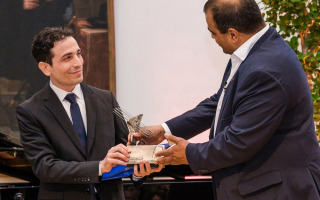IAP Colloquium - Dr. Nir Alfasi - 6.12.23
“Hybrid Quantum/Classical Machine-Learning with a Photonic Quantum Processor”
Quantum computing is an emerging technology that has the potential to accelerate some machine learning algorithms.
In this webinar hosted by Quantum Machines, we first present the ORCA PT Series photonic quantum processor: although it is not universal for quantum computation, it provides a scalable route to performing some tasks that cannot be performed by classical computers.
We'll then discuss how such a processor can be combined with current classical neural network architectures to provide unique computational capabilities.
One approach uses the quantum processor as a quantum neural network layer that replaces a classical layer. We'll demonstrate this approach on an image dataset and investigate how this impacts the performance of the model.
Alternatively, these states can be injected into the generator of a generative adversarial network (GAN). We show that this approach can yield a performance improvement compared to classical GANs on some datasets, and that this approach can scale to large image datasets.




